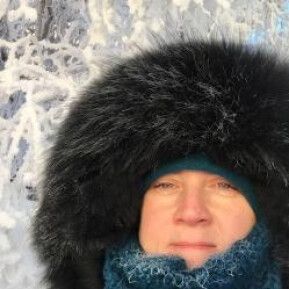Intergenerational Creativity and Learning through Indigenous Comic Art
Combining comic art, Athabascan heritage, and Smithsonian collections brings a unique, contemporary spin to traditional storytelling that’s been passed down over generations and offers new learning opportunities for today’s youth.
:focal(640x360:641x361)/https://tf-cmsv2-smithsonianmag-media.s3.amazonaws.com/filer_public/ab/fe/abfef45b-bbbd-490c-be30-bac617ac9240/first_frost.png)
Over the last several months, the creators of comic book Chickaloonies: First Frost partnered with the Alaska office of the Smithsonian Arctic Studies Center to expand their all-ages, Athabascan adventure into a teaching opportunity for students in Alaska and beyond. Based on the Chickaloonies characters and storyline, the project team created an in-depth workbook and developed a virtual workshop to engage learners. The workbook details how to make comic art and stories, and includes activities inspired and informed by Athabascan cultural heritage pieces in the Smithsonian’s Living Our Cultures exhibition at the Anchorage Museum, pieces enriched with information shared by Alaska Native experts during exhibition research and co-curation with the Center’s staff. Together, the team aims to empower Indigenous youth, and all youth, through creative expression and through intergenerational learning with family and cultural heritage, made relevant to their lives through developing their own artistic vision and voice.
/https://tf-cmsv2-smithsonianmag-media.s3.amazonaws.com/filer_public/72/81/72813990-51b6-4109-bad5-36505e34a94f/1_dm_cs_comic_books.jpg)
The project is led by an interdisciplinary team: Dimi Macheras (Ahtna Athabascan) and Casey Silver, the artists and story writers of 80% Studios; artist and knowledge-keeper Melissa Shaginoff (Ahtna Athabascan); and Dawn Biddison, Museum Specialist at the Center. In the edited excerpts below from their recent webinar, you can read about what underlies their work.
Dimi: I’ve been an artist ever since I can remember, doodling and drawing. I always loved cartoons, and I would illustrate some of the stories grandma would tell us. In a lot of ways, looking back, that was my first collaboration with a storyteller. Those were little comic books I was drawing, however crude and rough they were. One thing that I think makes this project so special is that we’re telling the story from the perspective of these two young friends who are launching out to become the greatest storytellers the world’s ever seen, just kind of like how me and Casey are. But along the way, they are learning, and as they learn, we learn. It becomes a step-by-step, hopefully, to the reader who is connecting through that, an interactive way to participate with what our family holds so special and so dear with what was left by grandma and mom and all the rest of our family doing great work in the village.
Melissa: Dimi and I, we both grew up with something called Ancient Stories, recurring stories meant to teach kids lessons. In so many ways, Chickaloonies is like a contemporary story that you’re creating. There are moments of storytelling, science fiction and magic, but it’s all hinged on cultural information and on the Ahtna language. What’s the process been like creating educational materials with Dawn and also being able to use the Smithsonian Learning Lab as a jumping off point to share even more information and expand your knowledge?
/https://tf-cmsv2-smithsonianmag-media.s3.amazonaws.com/filer_public/a2/0d/a20d5ab3-7164-44a5-8d4d-340f09b047bf/3_first_frost_p82.jpg)
Dimi: We’re students ourselves, learning as we go and the Learning Lab, the Smithsonian, and Dawn are a wealth of knowledge and reference materials. It’s kind of guiding our footsteps as we create this process. I think that the more we can imbue the story and the characters with actual real life knowledge, actual useable teachable knowledge, it’s going to be something special that can pass this along.
Melissa: You’re creating it in consultation with someone like me to go through content, edit and help direct things. Can you talk about that?
Casey: This has been a project that feels like it has weight to it: being able to tap into great lineage and history and do work in a respectful way by collaborating with people like you, Melissa, and hopefully more people in the future. Being able to get a well-rounded sense of what it means to represent Indigenous culture in pop culture today is really an important thing. For Chickaloonies, we really wanted to take the themes and values of traditional stories and present them in a new way. Do it where it’s fun and enjoyable, but at the same time there is a subtext of the power of language, of respecting your Elders, of intergenerational storytelling. How these things are relevant today, and how they can be seen in a bit of a fantastical way to guide our characters along in the story and for them to learn who they are. A lot of the idea is to help kids find their place in the world. To help kids see something where it’s not just Superman or Batman punching their problems. We really tried to have our characters be creative and think about what it is that they are affecting with their actions as they move through the world.
Melissa: It’s about lifting up all those kids that are reading it: showing them a way they can represent themselves in a medium that might already interest them. I just think about my school days, and it felt like the only place where my family was represented was in a two-month Alaska Studies course. I think in so many ways that it’s important to feel like your heritage, your culture, your family has a place in history, has a place that’s important and taught and shared.
/https://tf-cmsv2-smithsonianmag-media.s3.amazonaws.com/filer_public/51/17/511780eb-430e-45c4-a70d-45a65cf13b14/4_workbook_p48.jpg)
To learn more, watch the archived video in the team’s Smithsonian Learning Lab collection. There, you can also find information about each artist, details on First Frost and sample pages, a PDF copy of the workbook with a video introduction and the Athabascan heritage pieces that informed it, and information about workshops. The project team thanks The CIRI Foundation, Recovering Voices (National Museum of Natural History) and the Alaska State Council on the Arts for their generous support.
